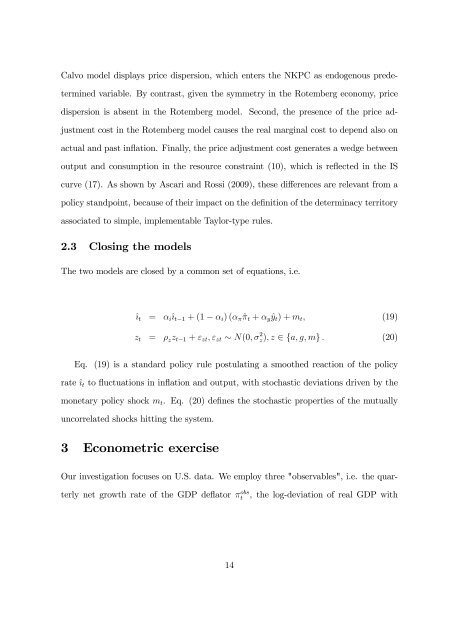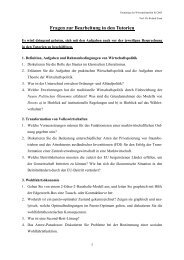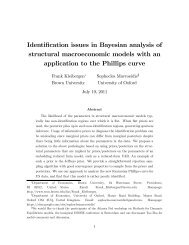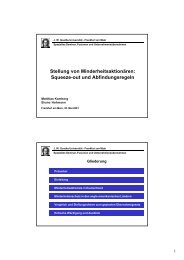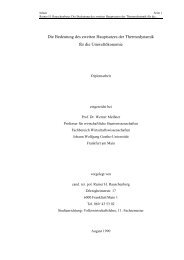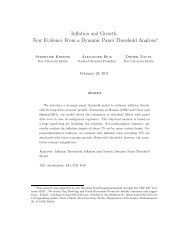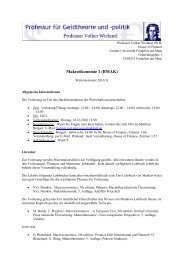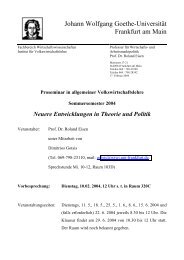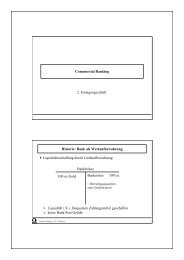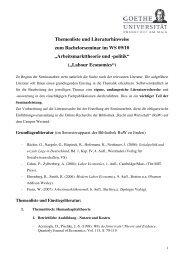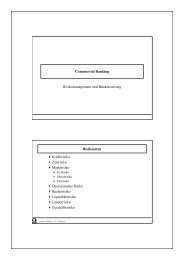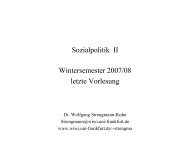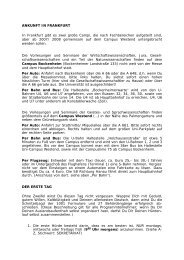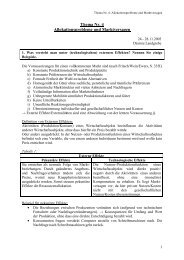Calvo vs. Rotemberg in a Trend Inflation World - Wiwi Uni-Frankfurt
Calvo vs. Rotemberg in a Trend Inflation World - Wiwi Uni-Frankfurt
Calvo vs. Rotemberg in a Trend Inflation World - Wiwi Uni-Frankfurt
You also want an ePaper? Increase the reach of your titles
YUMPU automatically turns print PDFs into web optimized ePapers that Google loves.
<strong>Calvo</strong> model displays price dispersion, which enters the NKPC as endogenous prede-<br />
term<strong>in</strong>ed variable. By contrast, given the symmetry <strong>in</strong> the <strong>Rotemberg</strong> economy, price<br />
dispersion is absent <strong>in</strong> the <strong>Rotemberg</strong> model. Second, the presence of the price ad-<br />
justment cost <strong>in</strong> the <strong>Rotemberg</strong> model causes the real marg<strong>in</strong>al cost to depend also on<br />
actual and past <strong>in</strong>‡ation. F<strong>in</strong>ally, the price adjustment cost generates a wedge between<br />
output and consumption <strong>in</strong> the resource constra<strong>in</strong>t (10), which is re‡ected <strong>in</strong> the IS<br />
curve (17). As shown by Ascari and Rossi (2009), these di¤erences are relevant from a<br />
policy standpo<strong>in</strong>t, because of their impact on the de…nition of the determ<strong>in</strong>acy territory<br />
associated to simple, implementable Taylor-type rules.<br />
2.3 Clos<strong>in</strong>g the models<br />
The two models are closed by a common set of equations, i.e.<br />
^{t = i^{t 1 + (1 i) ( ^t + y ^yt) + mt; (19)<br />
zt = zzt 1 + "zt; "zt N(0;<br />
2<br />
z); z 2 fa; g; mg : (20)<br />
Eq. (19) is a standard policy rule postulat<strong>in</strong>g a smoothed reaction of the policy<br />
rate ^{t to ‡uctuations <strong>in</strong> <strong>in</strong>‡ation and output, with stochastic deviations driven by the<br />
monetary policy shock mt. Eq. (20) de…nes the stochastic properties of the mutually<br />
uncorrelated shocks hitt<strong>in</strong>g the system.<br />
3 Econometric exercise<br />
Our <strong>in</strong>vestigation focuses on U.S. data. We employ three "observables", i.e. the quar-<br />
terly net growth rate of the GDP de‡ator obs<br />
t , the log-deviation of real GDP with<br />
14


